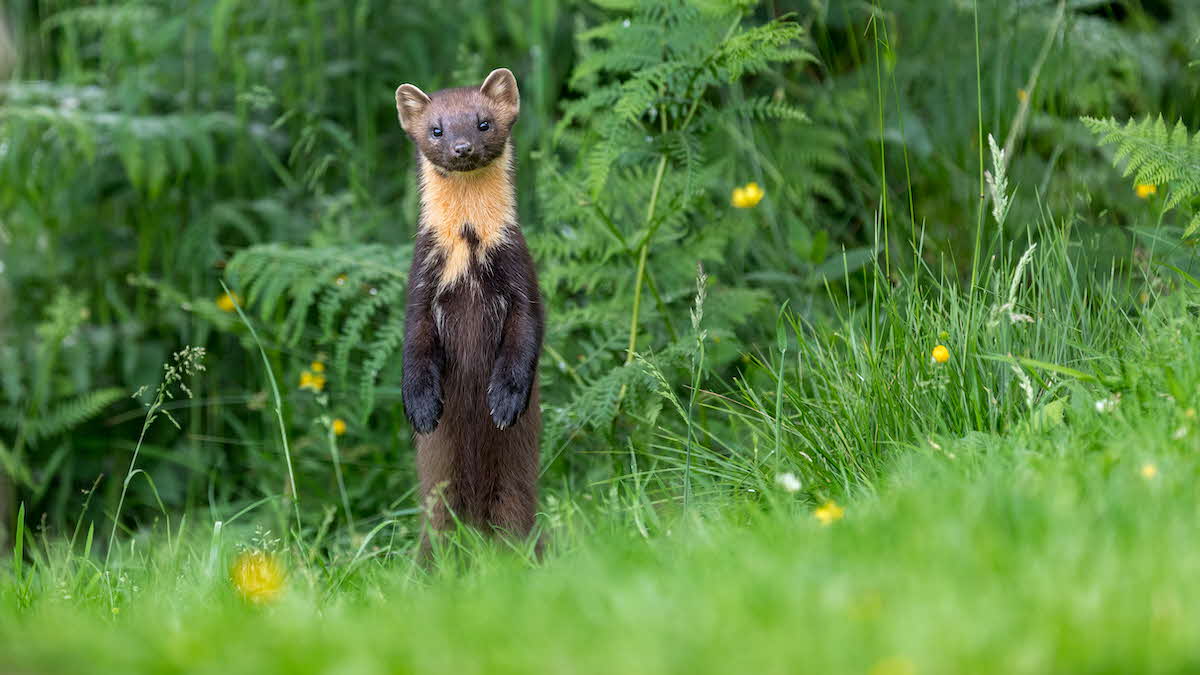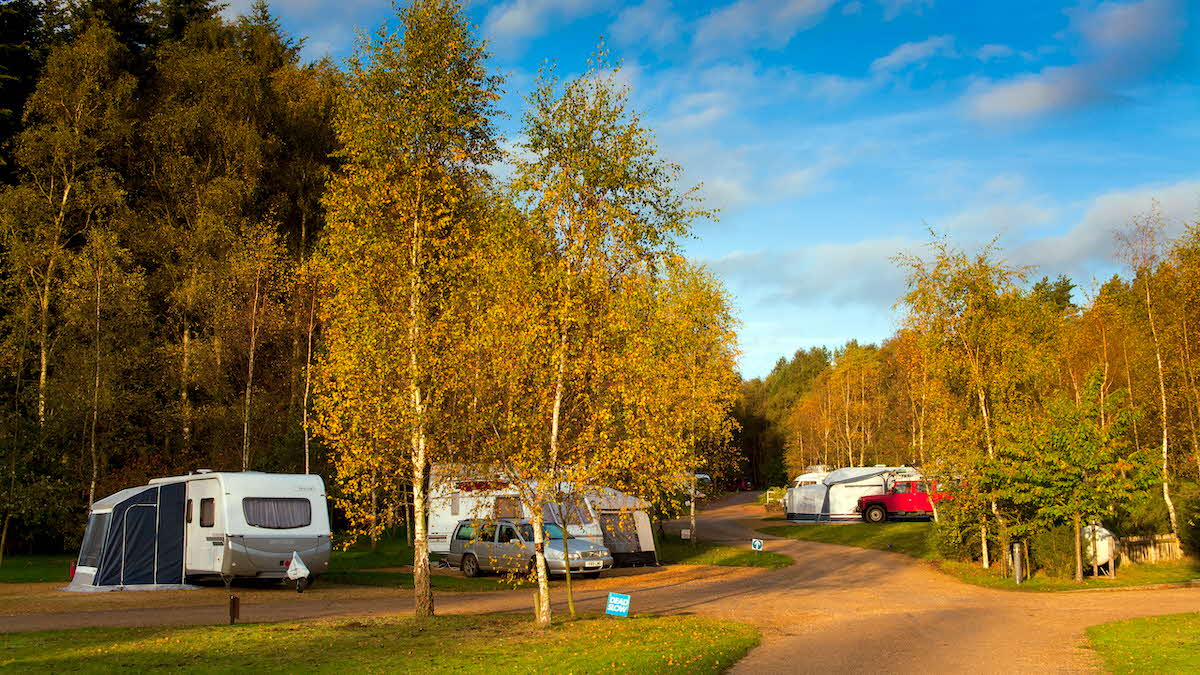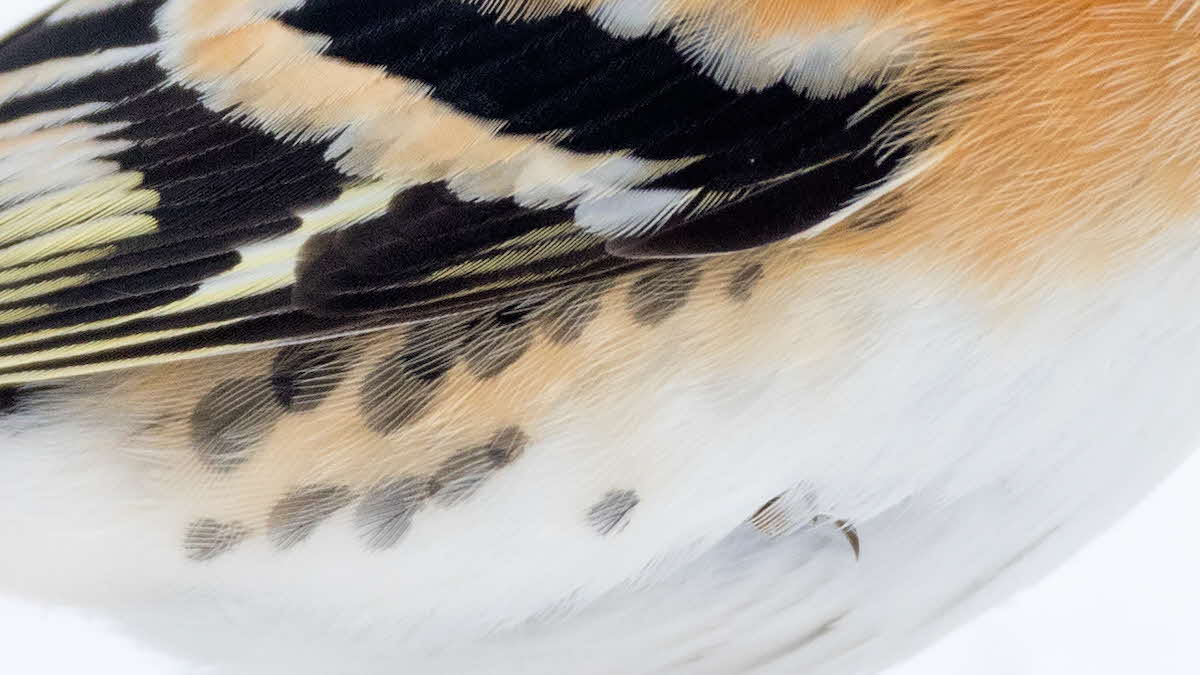Top nature campsites
You’ll be amazed at the variety of animals to spot on some of our Club campsites
View our top nature campsitesClub campsites play host to a wide array of mammals, birds, plants and other wildlife. David Chapman shares his best ‘spots’
 David saw a pine marten at Altnaharra Club Campsite
David saw a pine marten at Altnaharra Club Campsite
In these pages I often highlight wildlife that can be seen within easy reach of Club campsites, but this month I’m taking a different approach. The sites themselves can be havens for wildlife, so here I look back over some of the best experiences I have had close to my pitch.
One particularly memorable encounter was with a hedgehog on the way to the toilet block at Hawes Club Campsite (it was clearly house-trained!). In fact, facilities blocks are good places to spot wildlife. I remember watching swallows nesting under the washroom eaves at New England Bay Club Campsite near Stranraer, for example. From my pitch there I also watched yellowhammers – now quite rare in many parts of the country – singing from the surrounding gorse bushes, as well as linnets, whitethroats and stonechats. This site offers a spectacular outlook over Luce Bay; from the ’van window, it is possible to observe turnstones and ringed plovers on the beach, and a whole host of seabirds, including black guillemots.
Further north into Scotland, one of my best-ever Club site wildlife experiences was at Altnaharra. This is a wild location (it felt more like winter than spring when we visited in May) but my spirits were raised higher than the ambient temperature by the noisy oystercatchers flying along the shoreline of the adjacent loch. Later I saw a red throated diver on the loch and golden eagle over the distant fells. But, remarkably, the best was still to come: as day turned to dusk I watched a pine marten prowling across the site, and I can say with some certainty that it wasn’t going to the toilet block because Altnaharra doesn’t have one!
South of the border, I remember my visit to Borrowdale Club Campsite in the Lake District with great affection. This is a lovely site with pitches scattered through the woodland, and on early morning dog walks I came face-to-face with a roe deer. I also spotted a couple of pairs of pied flycatchers and wood warblers on site. Wood warblers have a very distinctive song that sounds like a coin spinning on a plate, so this bird is easy to locate even if it is difficult to see. Feeders on site attract a variety of birds, but the real highlight here is the adorable red squirrels.
I will never forget my visit to Nunnykirk Club Campsite in Northumberland (note: this site closed at the end of its 2024 season). A notice in the information hut encouraged visitors to watch out for otters in the stream that flows alongside the site. Although I didn’t see any otters, there was evidence of their activity: the remains of a white-clawed crayfish, which had clearly been on the dinner menu. The white-clawed crayfish is our native species of crayfish, but across much of the UK it is being outcompeted by the much larger, introduced American signal crayfish.
I was hooked. I headed down to the stream and started looking under stones; sure enough, I found white-clawed crayfish. The one and only time I have seen them. It turns out that Northumberland is one of their last strongholds in England.
In North Yorkshire I very much enjoyed our stay at Bolton Abbey Estate Club Campsite, home to an impressive yew tree which, in autumn, was covered in berries. This in itself would be worthy of mention, but the berries attracted a wonderful range of thrushes, including song thrushes, blackbirds, mistle thrushes, redwings and fieldfares. Instead of sharing the tree in an amicable fashion, many squabbles broke out, the ensuing noise useful in alerting me to their presence.
As many of you will know, sounds are an important aspect of wildlife watching. Chatsworth Park Club Campsite in Derbyshire is surrounded by a high wall and tall trees. The trees play host to great spotted and green woodpeckers, both of which can be noisy blighters. Noisier yet are the rutting deer barking and bellowing just yards away over the wall. The same could be said for Longleat Club Campsite, where lions provide the backing track. I’m quite glad I could only hear them from the pitch during my stay!
At Henley Four Oaks Club Campsite, the soundtrack featured the mewing and whistling of red kites – and, wow, were they bold! I witnessed one kite swooping down and pinching a sausage from a neighbour’s outdoor table. I did feel some apprehension about this – not everyone is going to welcome a bird of prey invading their pitch. Best to stick to feeding robins and blue tits.
 The Sandringham Estate is good for fungi spotting
The Sandringham Estate is good for fungi spotting
As it’s autumn, it seems appropriate to end my round-up with some fungi, and The Sandringham Estate Club Campsite will take some beating on this front. Look out for the birch trees, which often host plate-like birch polypores (also known as razor strops or birch brackets). Underneath the trees I found plenty of fly agarics with characteristic red domes and white spots. Taking a short walk into the woods around the site I found a whole host of other species boasting amazing shapes and colours, including earthstars and stinkhorns.
I hope I have encouraged you to keep your eyes peeled on your walks around Club campsites. Each one offers an opportunity to spot something. If you have any interesting experiences of campsite wildlife to share, please get in touch!

Every month I will show you a photo of something from the natural world. It might be a close-up, or a subject that is difficult to identify. All you have to do is figure out what it is! Here is this month’s photo; no clues or prizes – it’s just for fun. I will give you the answer next month – but if you can’t wait, log in to the Digital Magazine App.
The subject of October’s mystery photo was: porcelain fungus.